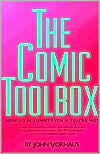I was doubtful when one of the owners of my local indie bookstore urged this book on me. However, she’d never steered me wrong before, so I succumbed. It’s a fictional retelling of the Dreyfus affair, a shameful chapter in France’s history and one which I thought I knew a lot about. Ha! After reading this absorbing book I realise that I only knew the barest outline of the story.
In December 1894 Alfred Dreyfus was convicted of selling French military secrets to Germany. The Army had learned that they had a traitor in their ranks and quickly settled on Dreyfus, an officer in the French army of Jewish descent, as the guilty party. Dreyfus was sent to Devil’s Island off the coast of Africa, where he was the only prisoner and held under appalling conditions for five years.
While the Dreyfus affair is generally considered a blatant example of anti-Semitism, there’s more to the story. This fascinating novel details the missteps and resulting coverups and persecutions. It introduces us to our narrator, Georges Picquart, a career Army man who is unexpectedly named the head of counter-espionage one year after Dreyfus’s conviction. Initially convinced of the man’s guilt, Picquart gradually becomes persuaded by the weight of evidence that the real traitor is someone else. Shocked by the obviously fabricated evidence, he realises that if he doesn’t back down, his career and even his life may be in danger.
The author introduces us to a large cast of characters, but each is so vividly drawn that that I didn’t have to refer to the Dramatis Personae in the front of the book. And the suspense generated is so powerful that—despite knowing the historical outcome—I couldn’t bear to stop reading.
Picquart’s dilemma, weighing his personal sense of honour against the heavy chains of conformity, couldn’t be more apt. How many people today would have the integrity to stand up to their superiors? It’s so easy to be a yes-man. How many dirty tricks have we seen come to light in the halls of power, and how many more are there that we never see?
The people in this story are all too human. They are not monsters, though many do monstrous things. Robert Harris has done the hard work of delving deeply into each one and excavating his or her motives. I can’t remember where I first heard this piece of wisdom for aspiring writers, probably from David Corbett: Even the villain thinks that he is the hero of his story. Learning why these people behave as they do makes this story spectacular and human and deeply moving.
Like my bookstore owner, I will be urging this book on everyone I know.
What novel have you read that helped you understand a historical event?






